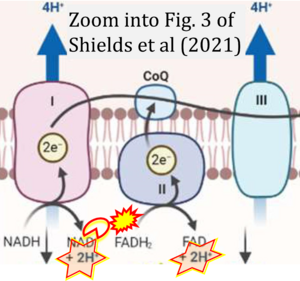Shields 2021 Front Cell Dev Biol
| Shields HJ, Traa A, Van Raamsdonk JM (2021) Beneficial and detrimental effects of reactive oxygen species on lifespan: a comprehensive review of comparative and experimental studies. Front Cell Dev Biol 9:628157. https://doi.org/10.3389/fcell.2021.628157 |
Shields HJ, Traa A, Van Raamsdonk JM (2021) Front Cell Dev Biol
Abstract: Aging is the greatest risk factor for a multitude of diseases including cardiovascular disease, neurodegeneration and cancer. Despite decades of research dedicated to understanding aging, the mechanisms underlying the aging process remain incompletely understood. The widely-accepted free radical theory of aging (FRTA) proposes that the accumulation of oxidative damage caused by reactive oxygen species (ROS) is one of the primary causes of aging. To define the relationship between ROS and aging, there have been two main approaches: comparative studies that measure outcomes related to ROS across species with different lifespans, and experimental studies that modulate ROS levels within a single species using either a genetic or pharmacologic approach. Comparative studies have shown that levels of ROS and oxidative damage are inversely correlated with lifespan. While these studies in general support the FRTA, this type of experiment can only demonstrate correlation, not causation. Experimental studies involving the manipulation of ROS levels in model organisms have generally shown that interventions that increase ROS tend to decrease lifespan, while interventions that decrease ROS tend to increase lifespan. However, there are also multiple examples in which the opposite is observed: increasing ROS levels results in extended longevity, and decreasing ROS levels results in shortened lifespan. While these studies contradict the predictions of the FRTA, these experiments have been performed in a very limited number of species, all of which have a relatively short lifespan. Overall, the data suggest that the relationship between ROS and lifespan is complex, and that ROS can have both beneficial or detrimental effects on longevity depending on the species and conditions. Accordingly, the relationship between ROS and aging is difficult to generalize across the tree of life.
• Bioblast editor: Gnaiger E
Correction: FADH2 and Complex II
- FADH2 is shown as the substrate feeding electrons into Complex II (CII). This is wrong and requires correction - for details see Gnaiger (2024).
- Gnaiger E (2024) Complex II ambiguities ― FADH2 in the electron transfer system. J Biol Chem 300:105470. https://doi.org/10.1016/j.jbc.2023.105470 - »Bioblast link«
Hydrogen ion ambiguities in the electron transfer system
Communicated by Gnaiger E (2023-10-08) last update 2023-11-10
- Electron (e-) transfer linked to hydrogen ion (hydron; H+) transfer is a fundamental concept in the field of bioenergetics, critical for understanding redox-coupled energy transformations.
- However, the current literature contains inconsistencies regarding H+ formation on the negative side of bioenergetic membranes, such as the matrix side of the mitochondrial inner membrane, when NADH is oxidized during oxidative phosphorylation (OXPHOS). Ambiguities arise when examining the oxidation of NADH by respiratory Complex I or succinate by Complex II.
- Oxidation of NADH or succinate involves a two-electron transfer of 2{H++e-} to FMN or FAD, respectively. Figures indicating a single electron e- transferred from NADH or succinate lack accuracy.
- The oxidized NAD+ is distinguished from NAD indicating nicotinamide adenine dinucleotide independent of oxidation state.
- NADH + H+ → NAD+ +2{H++e-} is the oxidation half-reaction in this H+-linked electron transfer represented as 2{H++e-} (Gnaiger 2023). Putative H+ formation shown as NADH → NAD+ + H+ conflicts with chemiosmotic coupling stoichiometries between H+ translocation across the coupling membrane and electron transfer to oxygen. Ensuring clarity in this complex field is imperative to tackle the apparent ambiguity crisis and prevent confusion, particularly in light of the increasing number of interdisciplinary publications on bioenergetics concerning diagnostic and clinical applications of OXPHOS analysis.




